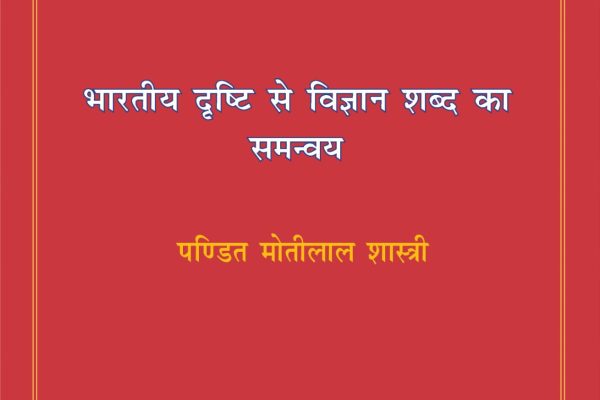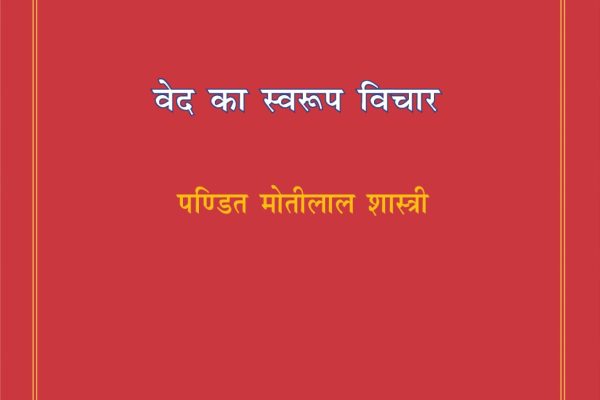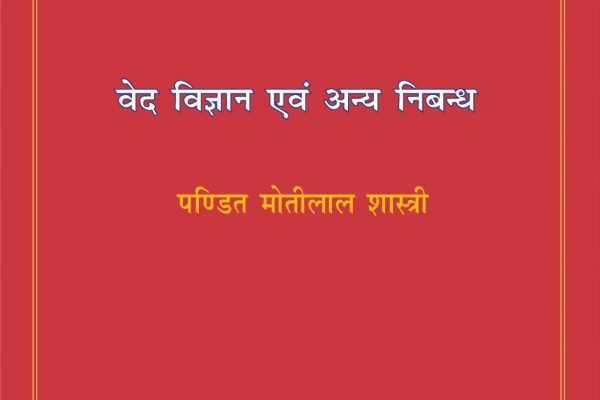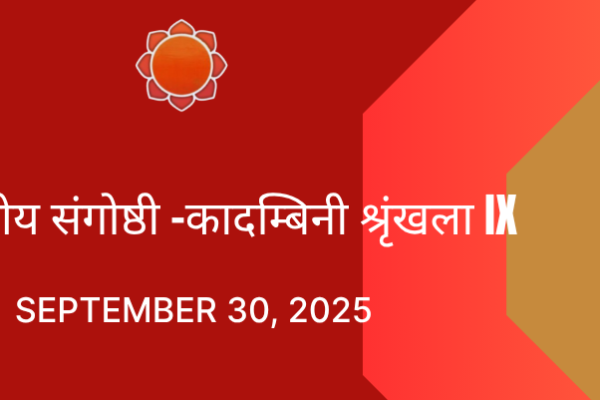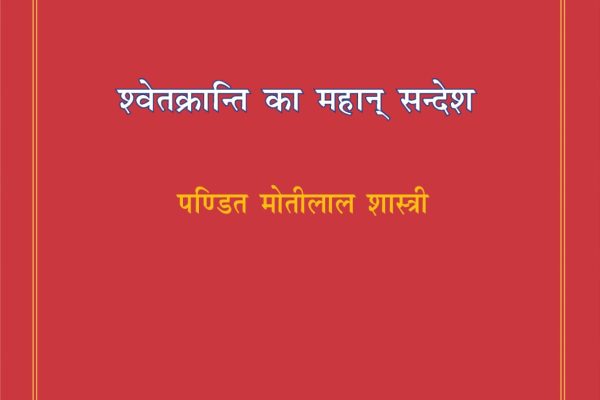
Shvetakranti ka mahan sandesh
The book is based on three subjects- Human way of life– It is said in Manusmriti that animals are superior among living beings and the intelligent is superior among living beings. Bhootanaam Praanina: Shreshthaah, Praaninaam Buddhijivinah. Manu 1.96, (p.10) Man has been divided into four parts- body, mind, intellect and soul. The body is related to the earth, the mind is related to the moon and the intellect is related to the sun. The soul of a human being is indestructible. (p.11) Are we human?- Just as there is a relationship between the soul and the body, similarly there is a relationship between religion and ethics. Ethics is the body and religion is the soul. That policy is the policy which protects the form of religion. Religion is that religion which keeps the policy established on its basis engaged in the progress of the people. Political views have also been discussed in this book. Communism, Praja Samaj, Congressism, Ram Rajya based on the principle of economic equation, Hindu Sabha based on communal sentiments, provocative Jan Sanghism etc. are the ideologies prevalent at present. Presenting the outline of the colour-related revolution on the basis of the four elements of body, mind, intellect and soul, it has been said that the body is the black revolution (black), the mind is the yellow revolution (yellow), the intellect is the red revolution (red) and the soul is the white revolution (white). Great message– Brahma is said to be indestructible and that is the soul. The human who enters the assembly of Prajapati soul becomes famous by the power of indestructible self-respect. The white, pure, Sattva Guna, knowledge-oriented fame is related to Brahmin Varna. Fame of Kshatriyas is manliness (strength). Fame of Vaishyas is economic power. Fame of Brahmin is related to Sun and intellect element. Fame of Kshatriya is related to moon and mind element and fame of Vaishya is related to earth and body element. These three are the world. श्वेतक्रान्ति का महान् सन्देश श्वेतक्रान्ति का महान् सन्देश नामक ग्रन्थ में तीन विषय को आधार बनाया गया है- मानवजीवनपद्धति- मनुस्मृति में कहा गया है कि जीवों में प्राणी श्रेष्ठ है और प्राणियों में बुद्धिमान् श्रेष्ठ है। भूतानां प्राणिनाः श्रेष्ठाः, प्राणिनां बुद्धिजीविनः। मनु १.९६, (पृ.१०) मनुष्य का चार भागों में विभाग किया गया है- शरीर, मन, बुद्धि और आत्मा। शरीर का पृथ्वीमण्डल से संबन्ध है, मन का चन्द्रमण्डल से संबन्ध है और बुद्धि का सूर्यमण्डल से संबन्ध है। मानव का आत्मा अव्ययप्रधान है। (पृ. ११) क्या हम मानव हैं- जिस प्रकार आत्मा और शरीर का संबन्ध है उसी प्रकार धर्म और नीति का संबन्ध है। नीति शरीर है और धर्म आत्मा है। वही नीति नीति है जो धर्मस्वरूप का संरक्षण करती है। धर्म वही धर्म है जो अपने आधार पर प्रतिष्ठित नीति को लोकाभ्युदय में प्रवृत्त रखता है। (पृ. १४६) इस ग्रन्थ में राजनीतिक विचार भी किया गया है। अर्थ समीकरण के सिद्धान्त पर चलने वाला साम्यवाद (कम्यूनिज्म), प्रजासमाजवाद, काँग्रेसवाद, धर्मभावात्मक रामराज्यवाद, साम्प्रदायिकभावनुगत हिन्दूसभावाद, उत्तेजनात्मक जनसंघवाद आदि आदि वाद अभी चल रहे हैं। (पृ.४९) शरीर, मन, बुद्धि और आत्मा इन चार तत्त्वों के आधार पर रंग संबन्धी क्रान्ति का रूपरेखा प्रस्तुत करते हुए कहा गया है कि शरीर कृष्णक्रान्ति (काला) है, मन पीतक्रान्ति(पीला) है, बुद्धि रक्तक्रान्ति (लाल) है और आत्मा श्वेतक्रान्ति (सफेद) है। (पृ. १६४) अनुशीलन, अनुकरण, आचरण और अनुकरण ये चार हैं। अनुशीलन से ब्राह्मण का, अनुसरण से क्षत्रिय का, आचरण से वैश्य का और अनुकरण से शूद्र का संबन्ध है। पाँचवा तत्त्व अव्यय है। जिसके व्यक्तिधर्म, संविद्धर्म, पुरुषधर्म सनातन आदि हैं। (पृ. ११३) ब्रह्म को अव्यय कहा गया है और वही आत्मा है। प्रजापति आत्मा के सभारूप विग्रह में प्रविष्ट मानव अव्ययात्मनिष्ठ के बल पर सर्वात्मना उस यश से यशस्वी बन जाता है। जो श्वेत, शुभ्र, सत्त्वगुण, ज्ञाननिष्ठ यश का संबन्ध ब्राह्मण वर्ण से है। क्षत्रियों का यश पौरुष (बल) है। वैश्यों का यश अर्थशक्ति है। ब्राह्मण का यश सूर्य से एवं बुद्धि तत्त्व है। क्षत्रिय का यश चन्द्रमा से एवं मन तत्त्व है और वैश्य का यश पृथ्वी से एवं शरीर तत्त्व है। ये तीनों विश्व हैं। इसीलिए ये तीनों विश्वयश हैं। विश्वात्मयश अव्यय है। वही आत्मयश है। (पृ.१६८) पिछले कई शताब्दियों से भारत की सांस्कृतिक और नैतिक प्रतिष्ठा में लगातार गिरावट आई है। यह हम सभी के लिए गंभीर चिंता का विषय होना चाहिए। भारत की अंतर्राष्ट्रीय प्रतिबद्धताओं के कारण, देश कई विचारों और विचारधाराओं का युद्धक्षेत्र बन गया है। Read/download
